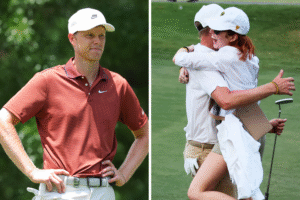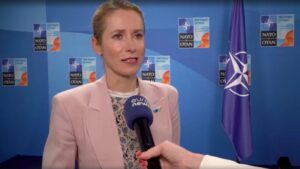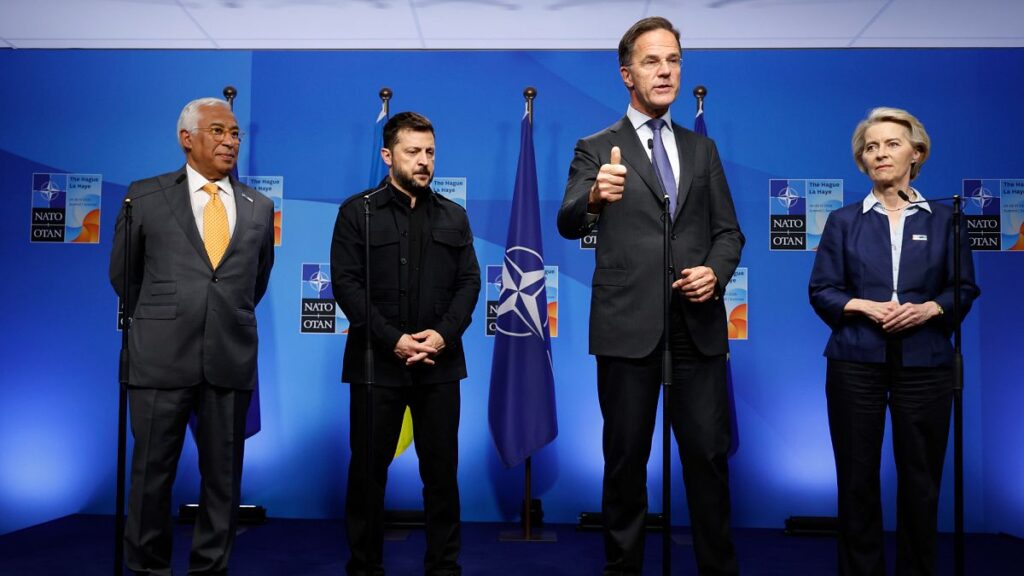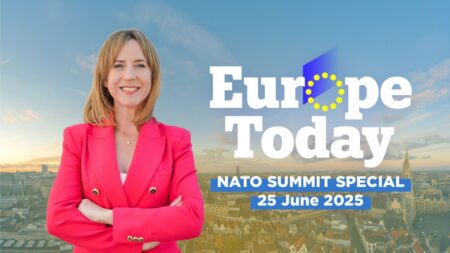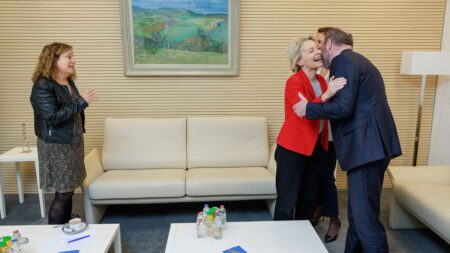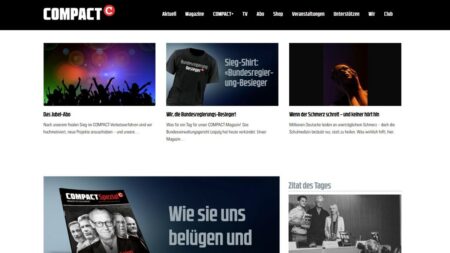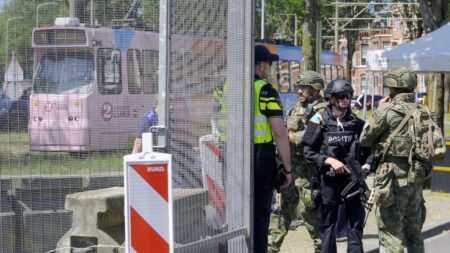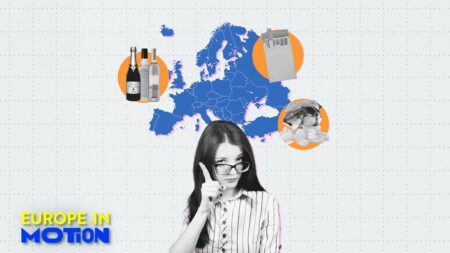Published on
All 32 NATO allies are meeting in The Hague for the annual leaders summit where NATO Secretary General Mark Rutte told reporters that Russia remains “the most significant and direct threat facing the alliance.”
But in contrast to last year, the focus on Russia’s full scale invasion of Ukraine is notably diminished from formal discussions.
Instead, the summit is pursuing a narrower ambition of pushing for allies to commit to spending 5% of GDP on defence.
“We know that the position of the United States has changed and therefore also here at the NATO Summit”, Dutch Defence minister Ruben Brekelmans told Euronews.
“The main topic, of course, is the 5% is a new, this historic step for our defence. But Ukraine remains equally important to us”, he said.
Ukrainian President Zelensky is attending the dinner the Netherlands’ King Willem-Alexander alongside leaders, and is also expected to meet with President Trump on the side-lines of the summit.
However, this year he won’t be present at the North Atlantic Council of heads of state and government.
In contrast, at last year’s NATO summit under the Biden administration Ukraine was given “irreversible” assurances of a path to membership. Allies assured Kyiv that it was on an “indestructible bridge” to join the alliance.
“Trump signalled he wanted the indestructible bridge off the table from the start,” Jason Israel, former member of the Biden administration’s National Security Council and senior director for defence, told Euronews.
“If I was Ukraine, of course I’d be nervous about how this is playing out at the moment,” he said.
There’s a growing acceptance that the US – although still providing Ukraine with vital intelligence – will no longer provide Ukraine with lethal weapons similar to that donated by the Biden administration.
“The real issue, is that the US does not see Ukrainian security as essential to European security, and our European allies do so,” said Kurt Volker, former US representative to Ukraine in the last Trump administration.
Europe “feels that if Putin is allowed to prevail in Ukraine, or if Ukraine does not survive as a sovereign, independent state, they are at risk, and that is a big security threat for Europe and NATO,” he said ahead of the summit at an event organised by the Centre for European Policy Analysis (CEPA).
Europe sees “the need to support Ukraine as integral to our security through NATO, the US simply doesn’t see it that way,” said Volker.
At the same time, NATO officials warn Russia is continuing to make gains around Sumy Oblast and Eastern Ukraine, although their assessment doesn’t predict Ukraine will be encircled.
Instead a high attrition rate and a slow, protracted conflict is expected to continue.
This is despite the remarkably high casualty rate – NATO says Russia’s troop losses have surpassed one million since the start of the full scale invasion.
Russia is currently “taking” 1,100 daily casualties, “down from peak in January of 1,500,” they said.
Read the full article here


